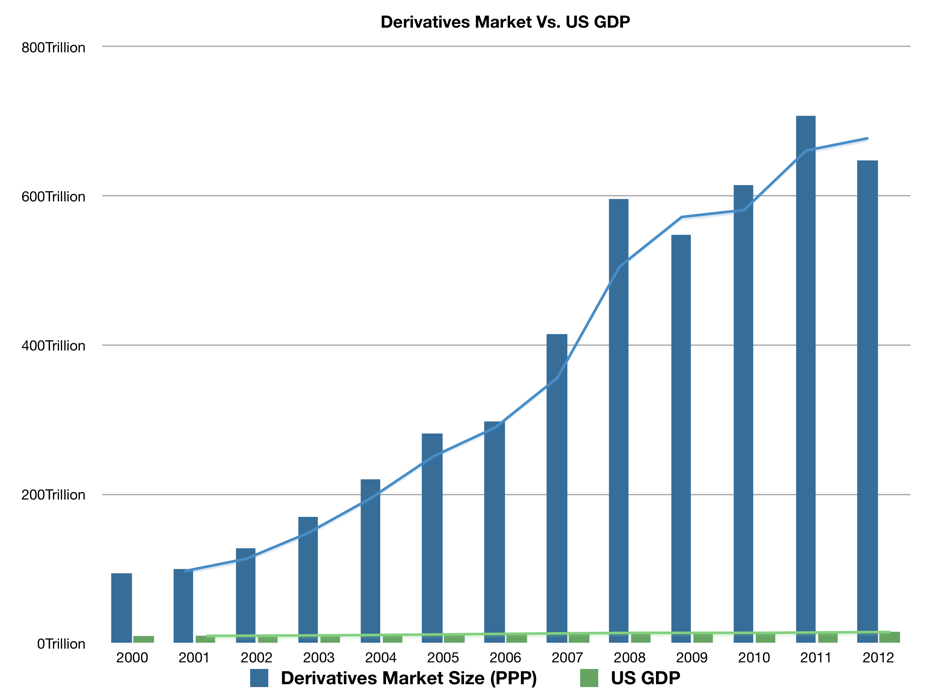
New questions are starting to surface as the growing concern over the largely unregulated derivatives market is annually trading approximately ten times the value of global GDP. These markets, which include the pooled mortgage assets that led to the banking crash of 2008, are now trading above the levels they were in 2008 and that has many concerned. The large financial institutions that had to be bailed out to prevent cascading global economic collapse are again heavily invested in these speculative markets, which are largely bets placed on people’s ability, or inability to fulfill their investment obligations.
The underlying issue with the new construct of these markets is that there are few limitations on how many layers of bets can be compiled. In other words, 1) one group can look at a pool of assets and sell derivatives on how that pool will perform, 2) then another group can sell derivatives on how that investment bundle will perform, then 3) another on how the later will perform until there are billions and even trillions of dollars riding on the performance of the original pool of assets, with no real ceiling on how high the values can go. It was this layered structure that allowed such institutions as Lehman Brothers to build such incredible portfolios of layered bets on their own assumptions that when the assets began to fail, it eliminated the group’s entire net worth, and consequently the assets of all of the investors whose money was under their control.
With no conceivable safety net capable of restoring these institutions if they were to lose this incredible wager again, there is growing concern that regulators have stayed quiet far too long.
Graphic courtesy of crunchthenumbers.net


